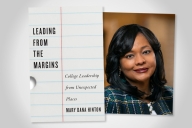You have /5 articles left.
Sign up for a free account or log in.
Any university or college student knows how badly textbook prices can sting, but for most, it’s simply the nature of higher education that they’ll have to obtain the text if they want to take the class. Sales of used books and book-rental services like Chegg have tried to address the problem, but the end result still requires a financial commitment on top of tuition.
But now, three different institutions are adopting a solution that is far kinder to students’ wallets. Robert Morris University, in Pennsylvania, the University of Texas at San Antonio, and Patrick Henry College, in Virginia, have all started a textbook reserve -- essentially a library from which students can borrow required texts. “This was the brainchild of an honors class,” said John Michalenko, vice president for student life at Robert Morris. “The students … were talking to their friends about the rising cost of textbooks on college campuses, which [have] actually risen 800 percent more than tuition increases.” From there, Michalenko explained, the students conducted a survey among classmates before submitting a proposal for the reserve idea. Robert Morris started the service in the fall, and allows students to borrow books for up to three hours at a time.
“It’s adaptable to any size institution, but of course it’s dependent on the dollars available to help start it,” Michalenko said. “Some schools are charging a fee for this; we did not.” The $10,500 used to purchase 170 books for Robert Morris' reserves was instead allocated from the university library’s operating budget and the university’s student emergency fund (which began in 2008 as a way of offsetting unforeseen expenses), along with some help “finding the best price” from Barnes & Noble, the university's on-campus book vendor.
Amy Chang, the UT San Antonio library's head of access services, said that for now, the university's program is small in scope. “Our reserve volume is not high,” she said. “We are not buying all the textbooks. We are very selective.” Michalenko, meanwhile, said that while Robert Morris's reserves began with pricier general education texts, they have since added less expensive material such as novels for literature classes.
“Traditional library collection development does not support textbook purchasing for various reasons, mainly due to the fact that textbooks are replaced by new editions and only provide for short-term usage by current students,” Chang wrote for the Association of College Research Libraries' newsletter in 2011. “However, as the library faced a growing demand for textbooks, we began to see the connection between the needs of our students and our student-centered library service philosophy.”
UT San Antonio, by contrast, simply covers the cost of the reserves via student library fees, according to Chang. “We just put it on reserve in the library,” Chang said “and students come in and request it.”
With new advancements like e-books and tablets, the reserve might seem surprisingly low-tech, but Michalenko said the students at Robert Morris preferred it that way. “Only 10 percent of the students surveyed were actually positive about using an e-book,” Michalenko said. “What we learned from, at least, our student population is that they like to turn the pages, they like to highlight the book, they like to go back … and the e-book method, to them, just wasn’t as user-friendly from a studying standpoint.”
Chang said that UT San Antonio was far more likely to implement e-books down the road. “Currently in our school, they’re still using print textbooks, so we’re buying print copies,” she said. “It’s not not on the table, it just hasn’t happened yet; we know it’s going to happen.”
At its core, however, officials from both institutions say the reserve program is happening because students asked for it. “I think it’s important to listen to our students, to find out what they’re thinking, what helps them be successful in college,” Michalenko said. “[W]e involve students wherever we possibly can.”








